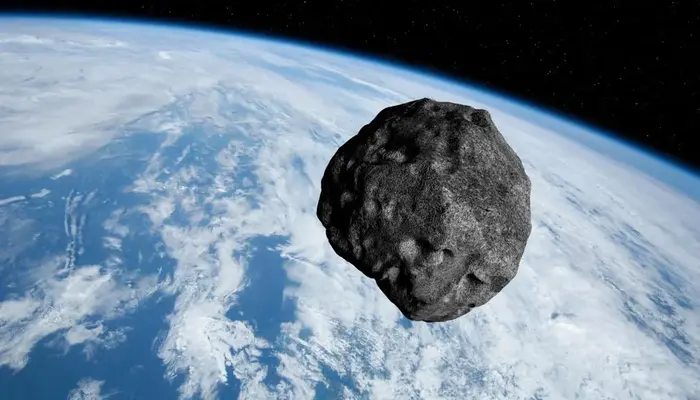The probability of asteroid 2024 YR4 colliding with Earth has risen, with astronomers revising its impact odds from 1.3% to 2.3%. This asteroid, roughly half a kilometer wide, is now a major focus for astronomers due to its potential threat. With its trajectory still being refined, scientists stress the need for continuous monitoring and early action if necessary.
Impact Risk and Affected Regions
2024 YR4 currently tops the Sentry list, which tracks objects with possible future Earth impacts. According to the International Asteroid Warning Network (IAWN), its “risk corridor” covers the eastern Pacific Ocean, northern South America, the Atlantic Ocean, Africa, the Arabian Sea, and South Asia. If it strikes, the damage could extend up to 50 kilometers from the impact site.
Increasing Odds and Varying Predictions
The increase from a 1.3% to 2.3% chance means the odds are now one in 43. However, some astronomers predict even higher risks. Sam Deen, a California-based amateur astronomer, estimates a 6% probability, reducing the odds to just one in 17.
2024 YR4 now holds a value of 3 on the Torino Impact Hazard Scale, making it the highest-rated near-Earth asteroid currently tracked. The International Astronomical Union maintains this scale, which categorizes asteroid threats based on their potential impact and damage.
Read: Mac Users at Risk: “Fully Undetectable” Tiny FUD Backdoor Threat
Possible Deflection Strategies
If confirmed on a collision course, several deflection methods could be deployed. One option is a kinetic impactor, similar to NASA’s successful DART mission in 2022, which altered the path of an asteroid. Another approach is a gravity tractor, where a spacecraft uses its gravitational pull to shift the asteroid’s trajectory. A nuclear deflection is also a possibility, though it would be a last resort.
Dr. Shyam Balaji, a researcher at King’s College London, emphasizes the need for early action. “Later interventions become significantly more difficult,” he warns, stressing that any deflection mission must be planned well in advance.
Context and Ongoing Monitoring
Asteroids frequently pass near Earth, and most identified threats eventually become non-issues. Over 33,000 near-Earth asteroids have been tracked since 1990, and most initially concerning objects were later ruled out as risks.
However, 2024 YR4 requires continued monitoring. It will remain observable only until April 2025 before disappearing from view until June 2028, leaving just 4.5 years before a possible impact. Radar observations won’t be possible until 2032, only months before its projected approach.
Discovery and Future Analysis
The asteroid was first detected on December 27, 2024, by the Asteroid Terrestrial-impact Last Alert System (ATLAS), an early-warning program developed by the University of Hawaii. Funded by NASA, ATLAS operates from Río Hurtado, Chile, scanning the skies for potential threats.
Astronomers continue to refine 2024 YR4’s trajectory, collecting as much data as possible before it becomes unobservable. While the risk remains uncertain, ongoing research will determine whether this asteroid poses a real danger or, like many before it, proves to be a false alarm.
Follow us on Google News, Instagram, YouTube, Facebook,Whats App, and TikTok for latest updates
